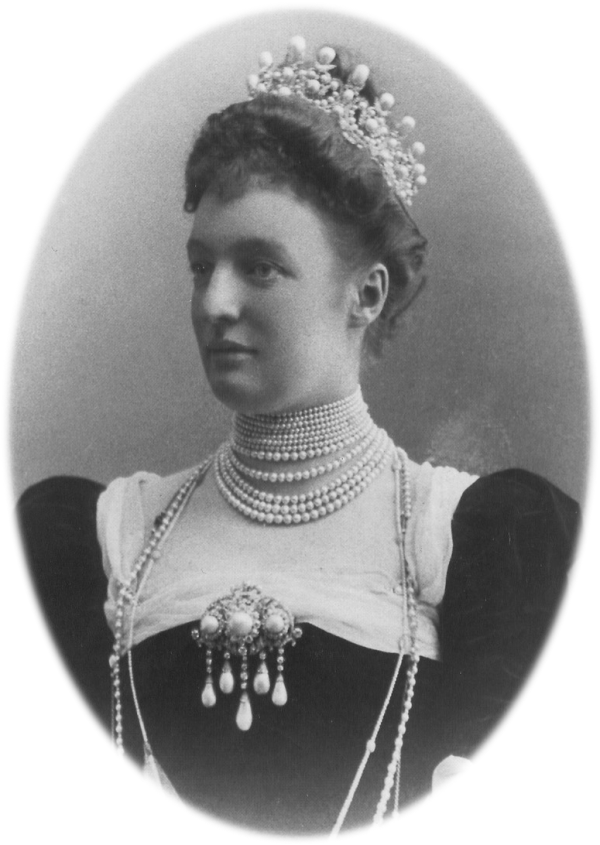
The Daily Diadem: Empress Eugenie’s Pearl Tiara

Sparkling Royal Jewels From Around the World

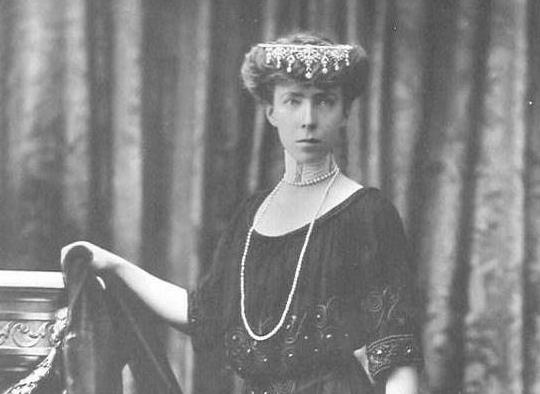 |
| Queen Elisabeth wears pearls — and an upside-down tiara! (Grand Ladies Site) |
Queen Elizabeth [1] is thinking of giving her long rope of splendid pearls a sea bath. They have been ill since she was stricken with fever and have lost much of their luster. Hers is one of the finest collections in Europe, and of all her beautiful jewels the Queen cherishes the pearls the most.
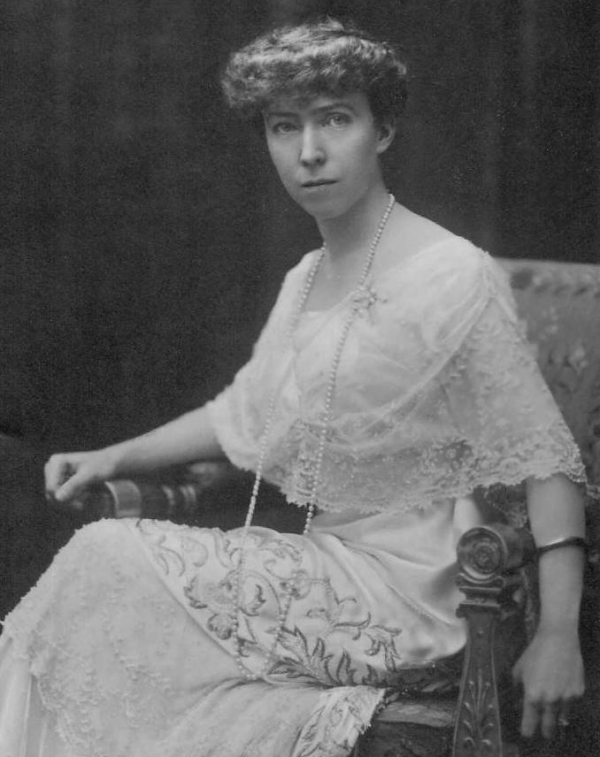 |
| Queen Elisabeth wears her pearls (Grand Ladies Site) |
Pearls have long been known to require intimate association with human beings, for even when pierced to the heart and strung into a rope they demand light and air and contact with the warm, velvety skin of women. Queen Elizabeth called in the best experts of Brussels and Amsterdam to examine her pearls, and they decided that radical treatment is necessary to restore their beauty. It is probable that the pearls will be hidden in the sea, as were the pearls of Queen Alexandra of Great Britain [2]. After three months’ submersion they recovered all their former “life.”
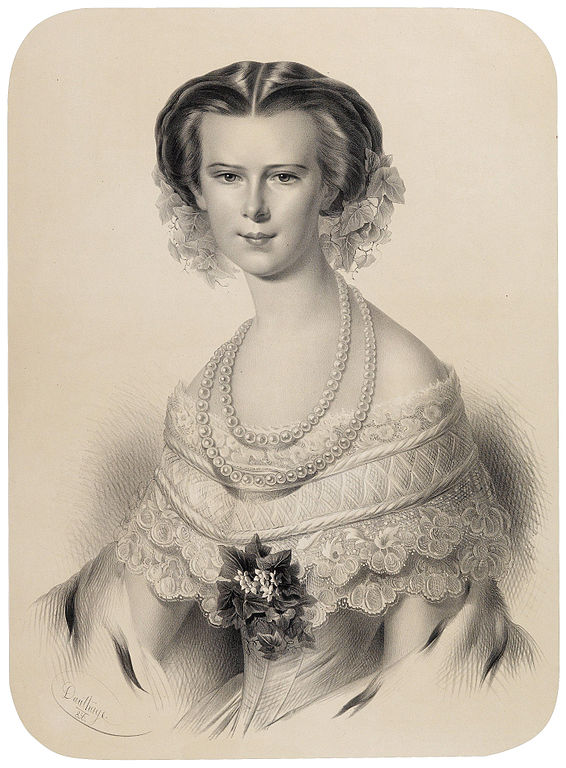 |
| Lithograph by Adolf Dauthage of Empress Elisabeth of Austria wearing pearls, ca. 1856 (Wikimedia Commons) |
These “tears of the sea,” like opals and turquoises, seem to be actually sympathetic, quickly responding to the mood of their wearers. The late Empress of Austria [3] had exactly the same experience with her pearls as Queen Elizabeth, for she, too, was ill with typhoid fever. Experts sank them in the Adriatic and a squad of men from a naval vessel still was on guard over them when the Empress was assassinated while on a visit to Geneva in 1898. It is said by Brussels jewelers that the sea treatment has been continued almost without interruption since, and they are showing but little improvement.
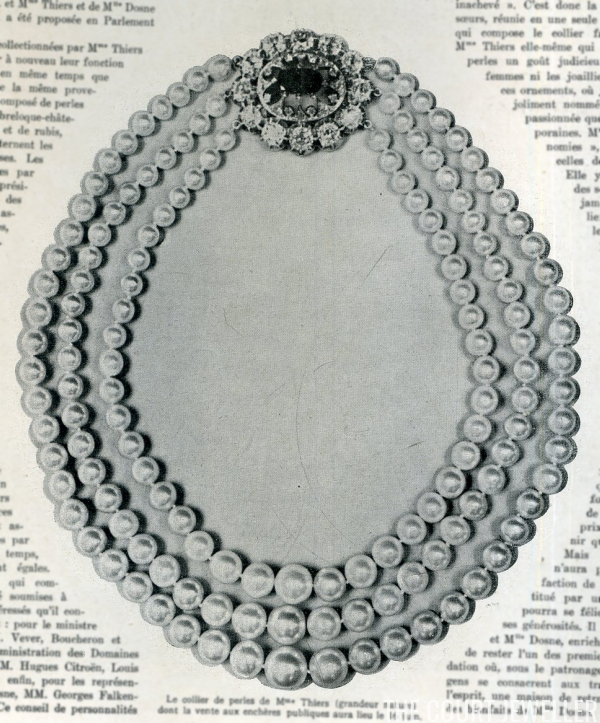 |
| Elise Thiers’s pearl necklace, ca. 1924 (Image: Wikimedia Commons) |
The splendid string of 150 perfectly matched pearls worn by Mme. Thiers, wife of a former President of France and bequeathed by her to the French nation, are still one of the prizes of the Louvre [4]. Yet their value has depreciated fully one-half, for, being shut up in a locked case and denied that intangible something that comes from being worn by women, they have lost much of their beauty and are becoming dull and lifeless.
When presented to the nation they were valued at $250,000, almost $2000 each. They were the envy of all Europe, and for years have been visited by collectors and lovers of pearls from all over the world. But today, experts say, they are scarcely worth half their former valuation, and will continue to depreciate, for there are reasons why they cannot be given a sea bath.
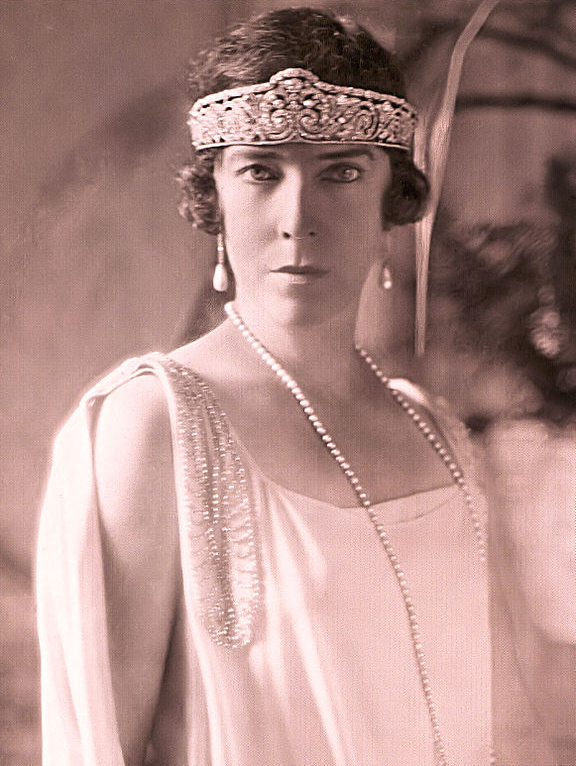 |
| Queen Elisabeth wears her pearls with her Cartier tiara, ca. 1920 (Wikimedia Commons) |
NOTES
1. Queen Elisabeth of Belgium (1876-1965), born Duchess Elisabeth in Bavaria, was the wife of King Albert I of Belgium. Through her father, she was a niece of Empress Elisabeth of Austria; through her mother, she was a granddaughter of the exiled King Miguel of Portugal. She was Belgium’s queen consort from 1909 to 1934, when her husband unexpectedly died in a mountaineering accident. News reports noted that she was ill with typhoid fever in late 1910. She recovered, and she lived another half century, long enough to see both her son (King Leopold III) and her grandson (King Baudouin) on the Belgian throne.
2. Queen Alexandra of the United Kingdom (1844-1925), previously Princess Alexandra of Denmark, was the wife of King Edward VII of the United Kingdom. She had several magnificent sets of genuine pearls, but she was also known for wearing faux pearls.
3. Empress Elisabeth of Austria-Hungary (1837-1898), born Duchess Elisabeth in Bavaria, was the wife of Emperor Franz Joseph I of Austria-Hungary. Better known as “Sisi” (especially after a series of popular German films about her were made in the 20th century), she was a beautiful woman whose privileged life was marred with tragedy, including the death of her son, Crown Prince Rudolf, in the Mayerling Incident of 1889. She was assassinated while walking along a promenade in Geneva in 1898.
4. We covered the “death” of the pearls of Elise Thiers in a previous post, which you can read over here. The Louvre sold the pearls, along with the rest of the Thiers collection, in 1924. The necklace was purchased by Cartier and later either sold or dismantled.
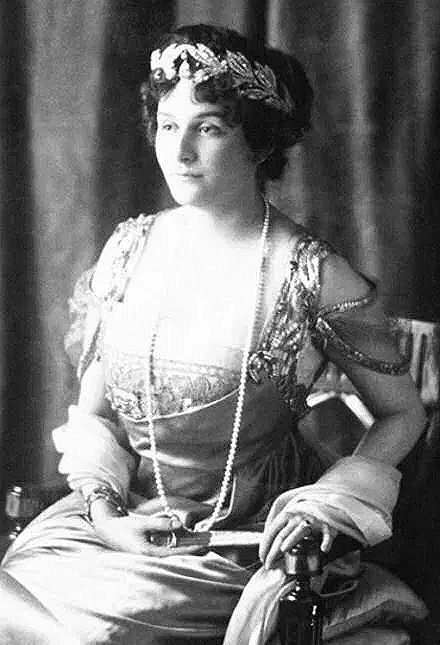 |
| Grand Ladies Site |